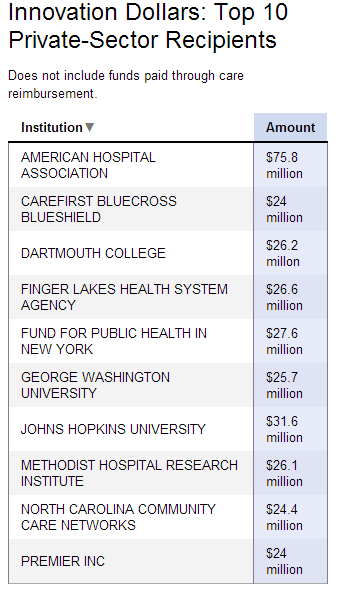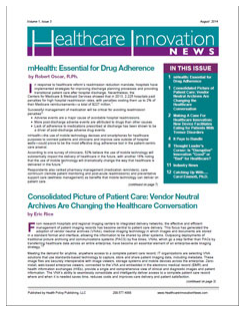By Laurie Gelb, July 28, 2014
(Read the first installmant of this part post at Stopping on Green)
They Don’t Need No Satisfaction
If/as we rethink the adherence doctrine, with its emphasis on following bottom-up, and begin to consider supporting patients as largely self-informed deciders rather than passive consumers, to what corollaries does that lead?
Imperative 1: Consign “patient satisfaction” to the worm bin, and focus on beliefs and behaviors that drive optimal outcomes. These are not the same thing. The latter arise from knowledge, experience and culture. Patients aren’t satisfied, and can’t be, with a product that they hate, fear and continually shy from, unless they seek it out obsessively. They can be content with a single or series of encounters that turn out well, or “the best they could,” but we don’t want them to repeat the experience unless/until they have to, and indeed most of them [the worried well notwithstanding] don’t. In what other category do we worry about who likes Dr. Smith how much while telling all and sundry that only 10% of the solution rests with Dr. Smith? And speaking of that 90%…
Imperative 2: Disease management that constrains high utilizers’ cost curves while optimizing the outcomes for which we all pay. As we tell patients continually, but fail to support, we are actually not in charge of managing _their_ disease. To manage disease, we have to support patient, clinician and caregiver choices that avoid duplication, optimize coordination and keep health, not health care, as the laser focus.
Imperative 3: An an e-health platform that supports all of the above.
E-health is only as good as the health part. It can’t be acceptable to cede EMR design to bureaucrats, process refinement to the business office and online functionality to Webmasters and programmers.
Baby, I Don't Have a Car
Are we so focused on “consumer-driven care” that we have forgotten to provide consumers with a vehicle to drive toward optimal outcomes?
We can’t decide to educate simply if/how/when to deviate from our bibles. It doesn’t pay enough for a layperson to learn our bibles. We have to educate in a different way — not simply about vocabulary and labels (the much-touted health literacy, which means about as much as knowing how to read an electrical schematic out loud).
We can, as any educational program, provide healthcare intelligence. A consumer knows how to change a light bulb and if/how she can rewire a socket. In short, she knows what she doesn’t know. When we preach “follow,” many patients are honestly unsure as to the decisions they have the capacity to make. Then, when they call the overloaded provider’s office to ask about their current concern, we fail to address the underlying uncertainty about the parameters that prompted the question in the first place. Definitions of terms are not a substitute, since knowing what wiring is doesn’t mean I’m off to the junction box.
The Long and Winding Road
I know that on some freeways, I can exceed the speed limit, but that still doesn’t mean I can drive 100 mph [an action whose commitment time is obviously greater, given braking distances, than if I were driving 70]. I also know that speed can mean death [stakes]. We know that we must never pour a drop of water into a gas tank, to take one example. Or that we should never pour gasoline onto a flame. We are not going to deviate “just a little” to see what happens. How did we internalize, abstract the rationale for these absolutes? We learned something from someone and/or tried it once, depending on our respective backgrounds.
Even when disease management prides itself on counseling small, incremental changes (bring an apple to work!), we are prescribing without insight on either side. If I hate apples, I’m left wondering if it’s comparable to bring a red plum, which I do like. Think about how long that simple question would take to answer via the Internet, and you have a glimpse of the muddy information overload around fruit. And everything else that might be healthy.
Few of us eat eight servings of fruit and veggies daily (or know how many we ate). We can’t. When as content providers we offer these lofty outcome measures as “information,” consumers roll their eyes, laugh, sigh, blink, snort, tune out and move on. We want and expect them to deviate if/as necessary. In wellness, we encourage them to “do the exercise you like” and eat the greens they like, etc. We don’t say, eat a carrot salad every day because we know they wouldn’t, however good an idea it might be. Yet our most common copy point in command voice is, “Eat [insert official content here].” That implies a literal meaning, for something that we don’t mean. This language is worse than gibberish; it spawns opposition because it rings so far from the truth of daily living.
Moreover, to apply information, you have to know something about evaluating information quality, relevance and how literally you need to take it. How are we imparting a health care “street sense?”
Teach Your Patients Well
If we put on a can of peas the bland, cover-the-bases “content” that populates the major health information sites, human knowledge of peas would come from experience and the “word on the street,” just as it does for other areas in which the “official voice” is seldom heard because it is too opaque. How much of what you know about street drugs comes from officialdom? Amazon can recommend, sales associates can counsel, but for health care, with far greater stakes, there’s canned risk assessments (scripted encounters, waiting room brochures, package inserts, click here for a percentage you’ll need the footnotes to understand). For the obese, the dyslipidemic, the diabetic, the hypertensive, the smokers, we’ve made a better path the ultimate cliché.
For decades, we’ve said, “We need to teach people the principles of weight management,” while forgetting the public health 101 concept of self-efficacy. If they don’t believe they can’t do it, they won’t even try. Weight management and all the rest of the “good ideas” require a series of choices that many people don’t believe they have the wherewithal to undertake, particularly in the face of an increasingly contradictory evidence base that our nagging letters usually fail to acknowledge at all. We’re not having conversations, as occur whenever you chat with your mechanic; we’re lecturing, pretentiously, and everyone’s falling asleep, only to wake up when the EOB appears.
And then we have the “act as if” faction in our ranks. “Big change is the only way it happens!” Yes, big change can happen if/when someone is scared, cornered, bored, self-impatient, angry, sorrowful. But we’re being paid on outcomes. Can we bank on emotion to inspire often short-lived change? And change from what? Our baseline measurement system is hopelessly flawed. Surveys reveal “the right answer.” Focus groups are pay for-a-play. Claims data reflect reimbursement, less often reality. Medical charts reflect adversarial legal incentives and a shortage of time. Even “real dialogues” during outpatient visits vamp to the camera, and social media monitoring finds the outliers with lightning speed. The best evidence of the real you have at your disposal any time is looking at you in the mirror.
Tell Me Why
Our risk assessment tools don’t allow the patient to contribute the facts that s/he knows best. Clinicians use heuristics to document and chart. Most charted histories omit at least one potentially relevant condition, event or genetic predisposition; it was not on a form, and/or it was not discussed. Many patients also reveal “medical history fatigue” which constrains the completeness of any particular history, and patients who have seen their chart notes are also aware that not all the information they provide is captured, apart from the form itself.
Since our brains are small, our days short and we’re only human, just as we have to use heuristics (decision shortcuts) to make everyday decisions about which route to take to work or what to order for lunch, we use heuristics to prioritize, consider, make, avoid, deny, delay and simply tune out myriad health issues and choices. We’ve failed miserably to convey stakes and commitment times in health care, a lack of knowledge that can only constrain optimal decision-making. If an alien from another planet watched TV or went online for a few minutes, who could blame him for thinking that allergies or erectile dysfunction must be the world’s worst plague?
It's All in the Game
In short, instead of focusing on an illusory “healthy mindset” whose stock doctrines are breathtakingly obvious (don’t touch the hot stove, stop smoking and cut back on Twinkies), we can more productively allocate all the money spent on bland DM pap to upgrading to the decision support available for silk blouses and video games.
This week’s stiff-upper-lip letter from a major network, syndicated by a major vendor: …”We understand that there are many reasons why you may not want to take your medication…if you have any questions or concerns, we encourage you to contact your doctor or local pharmacy.” Talk about “information” that will never be [read or] used! Each two-page letter contains two sentences about the particular drug’s rationale and consequences for not taking it; the rest is unadulterated condescension. How recently was any of your communication…interactive? Inquisitive? Conversational? Brief?
Direct education in decision-making requires not just doling out information, but encouraging its acquisition through other channels, preaching that it is best leveraged in combination and in understanding, not rote. And then, it falls to MCOs, agencies, clinicians, jurisdictions…anyone with skin in the game, to kick our cheerleaders off the field and start playing full contact football. Our opponents include disease, ignorance, fear, denial, poverty, hunger, addiction and crime. And they've got a large lead.



 Share This Post
Share This Post 






